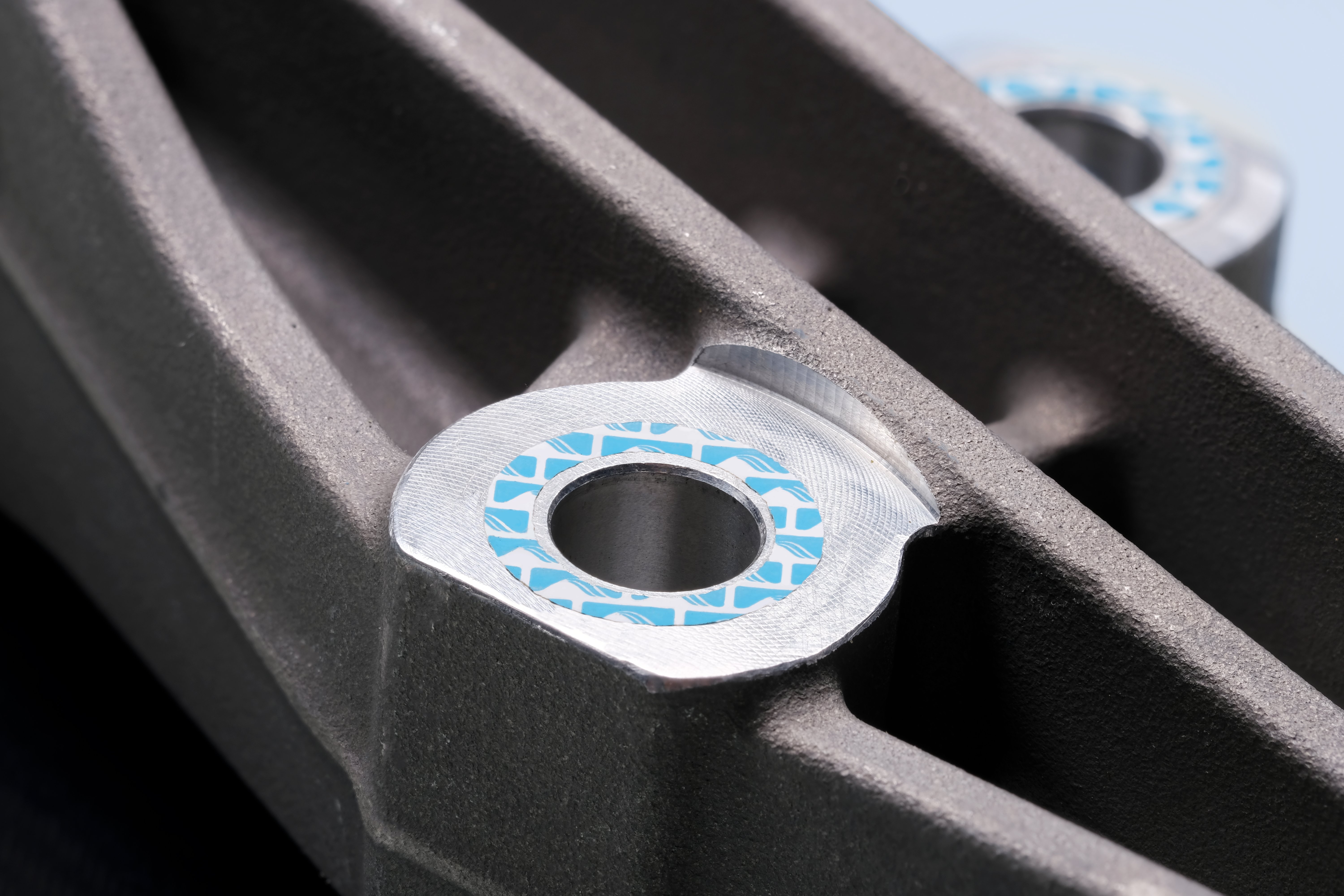
Friction Inserts
- Energy
- Mobility & Transport
- e-mobility
- Processing
Coated nonwovens for improved static friction
Friction Inserts to enhance the performance of bolted and press-fitted connections
Friction Inserts are performance boosters that can be used in large size flange connections of wind turbines, as well as in bolted or press-fitted connections in cars and other mechanical components.
The Friction Inserts technology is based on a special nonwoven carrier material, which is coated on one side with hard particles and placed within a friction joint. This allows hard particles to penetrate both surfaces, creating a micro interlock that increases the static friction coefficient.
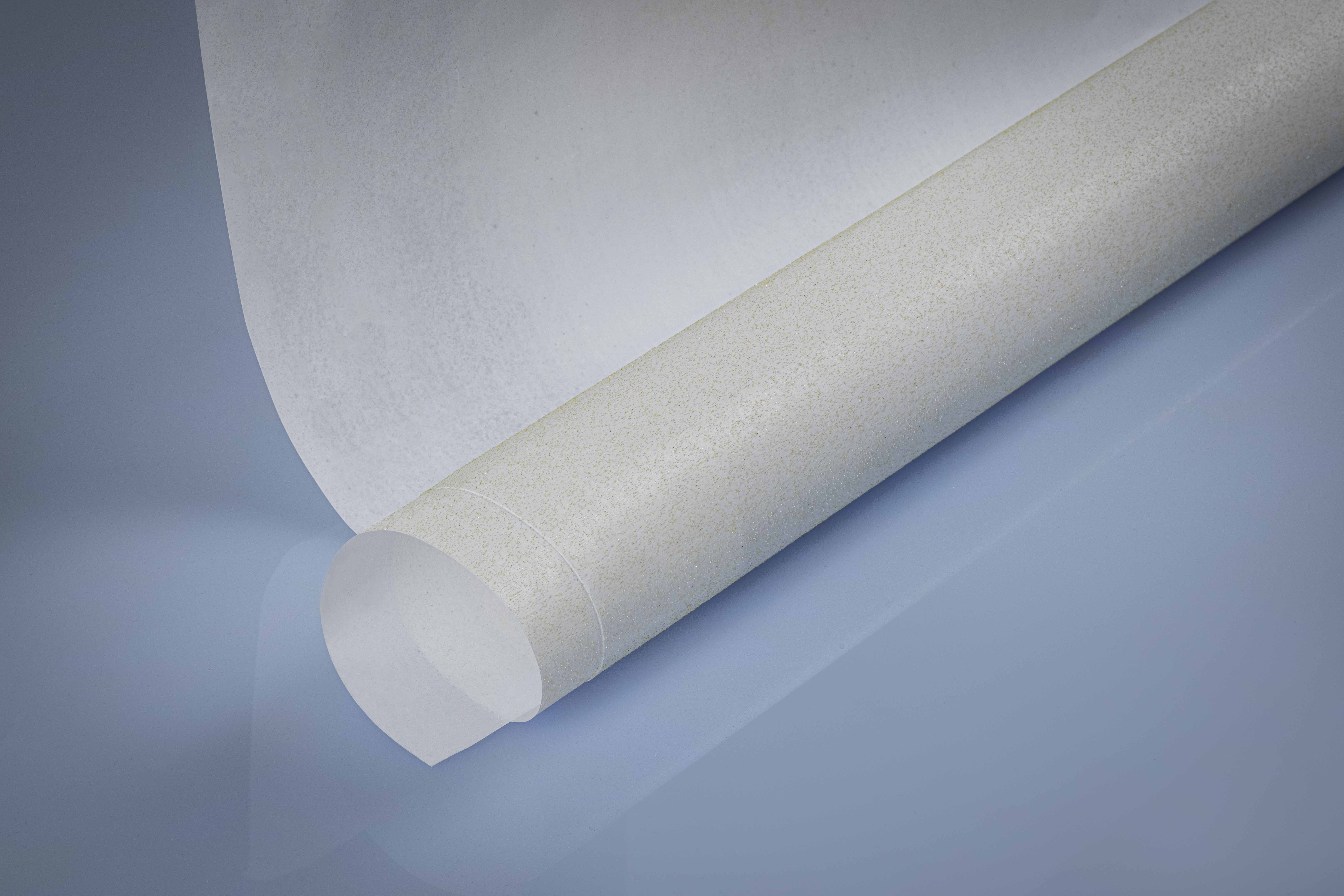
Key Features
- Static friction coefficients up to µ= 0.95 possible
- Significant increase in torque and shear forces
- Unique low deviations of the achievable static friction coefficient
- No impact on part tolerances, enabling the same-part strategy or retrofitting
- Friction enhancement even on corrosion-protected parts
- Color contrast between Friction Inserts and the part surface enables image-based quality assurance (e.g. camera systems)
- Use of 100% inert materials, ensuring no impact on the corrosion behavior in the joint
Key Benefits
- Frictions Inserts enable:
- downsizing of components without sacrificing performance
- same performance with fewer or smaller bolts
- higher performance from the same components - No gap between the bolted parts
- Higher reliability of components
- Prevents components from fretting
- Customized product and application processes
Innovative technology for bolted and press fitted joints
Transmission of higher torques and shear forces
The Friction Inserts technology uses a special nonwoven carrier material coated with hard particles on one side only. Positioned between the components of a friction joint. the hard particles penetrate both surfaces, creating a micro interlock.
Unlike existing hard particle technologies, Friction Inserts have a thin material profile that does not affect the tolerance of the parts and can be easily retrofitted to existing connections.
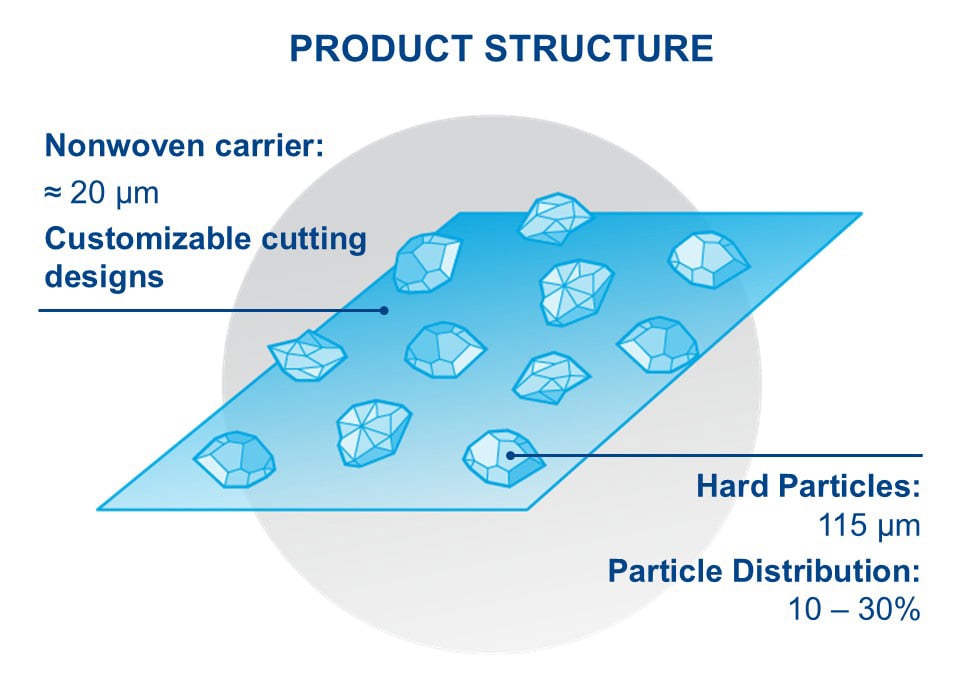
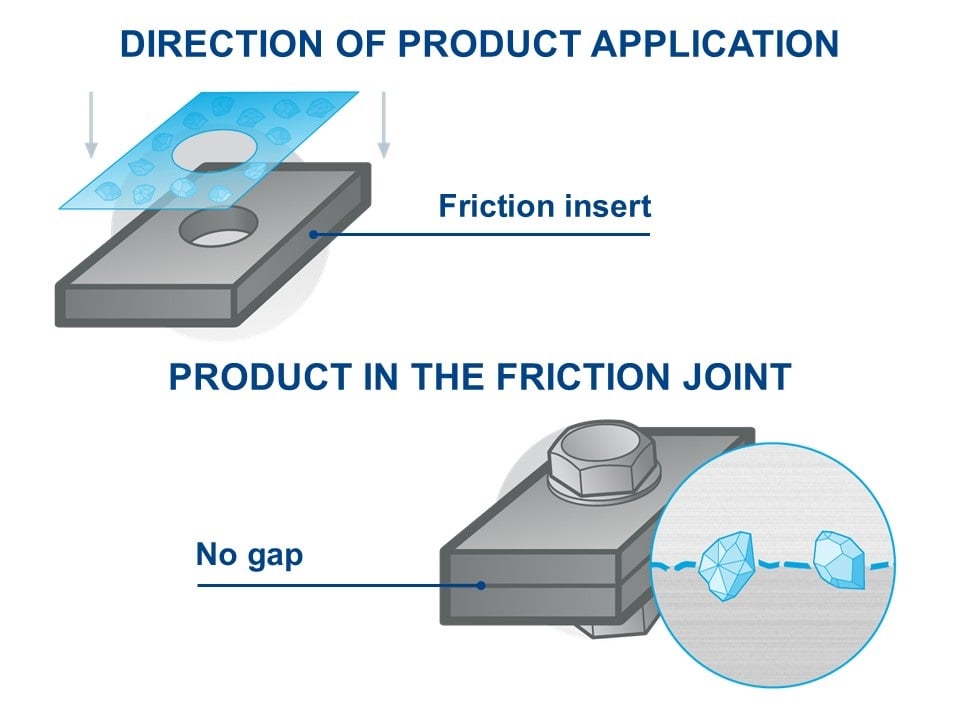
A number of benefits can be achieved with the significant increase in the static friction coefficients, such as the transmission of higher torques and shear forces due to the optimized friction joint, the reduction in the number and/or size of the bolts used, or minimized micro vibrations enabling a higher reliability of the joint.
This innovative and powerful technology also promotes the goal of maximizing the output of a wind turbine.
Increase power density in wind turbines
The demand for higher performance implies that screwed and press fitted connections are exposed to increased forces and torques. This applies especially for all kinds of flanges in wind turbine applications. Friction Inserts provide a solution to meet these higher requirements.
Friction Inserts bring specific benefits for wind turbines:
- Higher torque is transmitted, which increases power density
- This enables the downsizing of components
- Reliability is improved
- Fretting is prevented
- Thanks to highly flexible possibilities for individual cuttings, the shape and geometry of the Friction Inserts are customized for each project
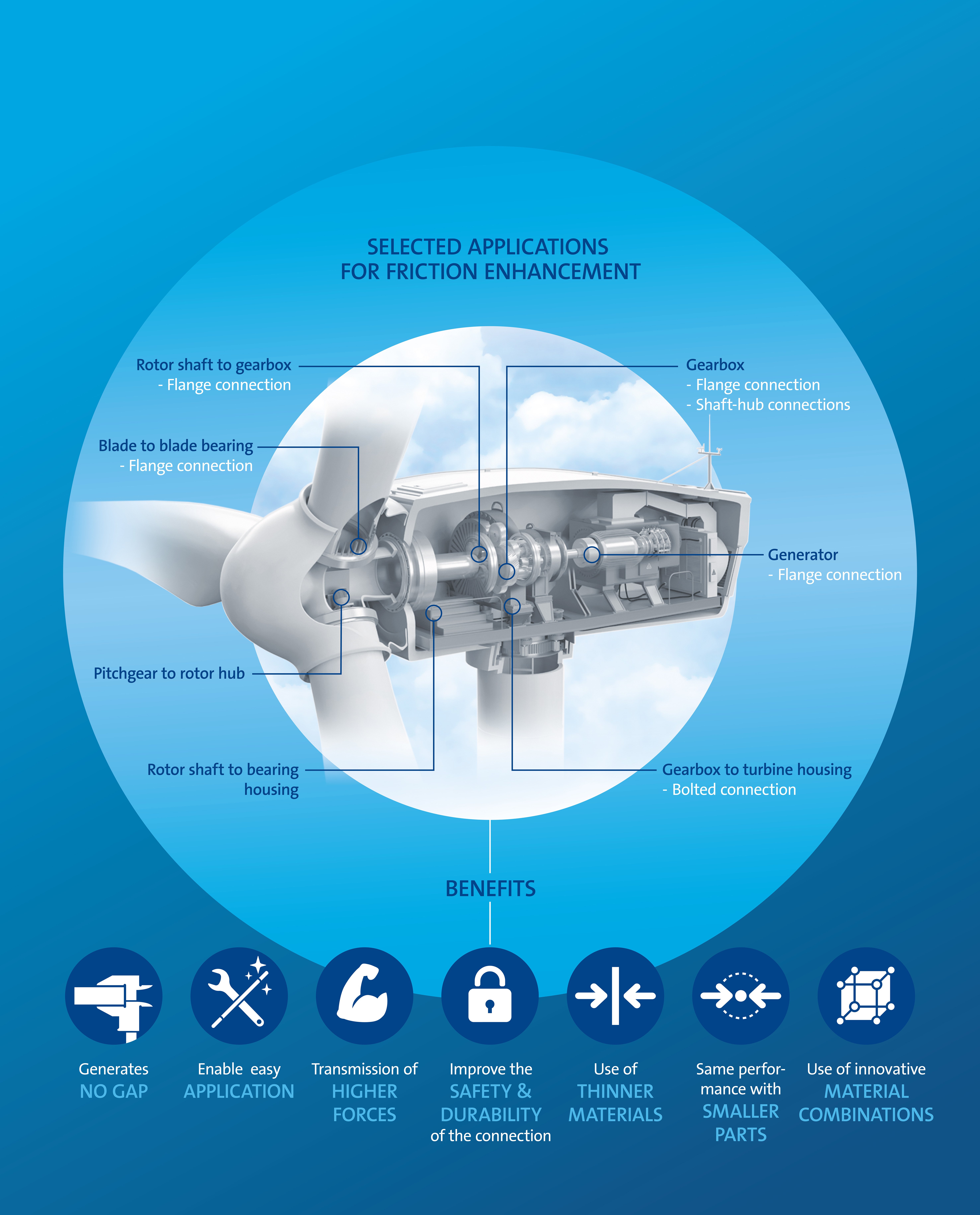
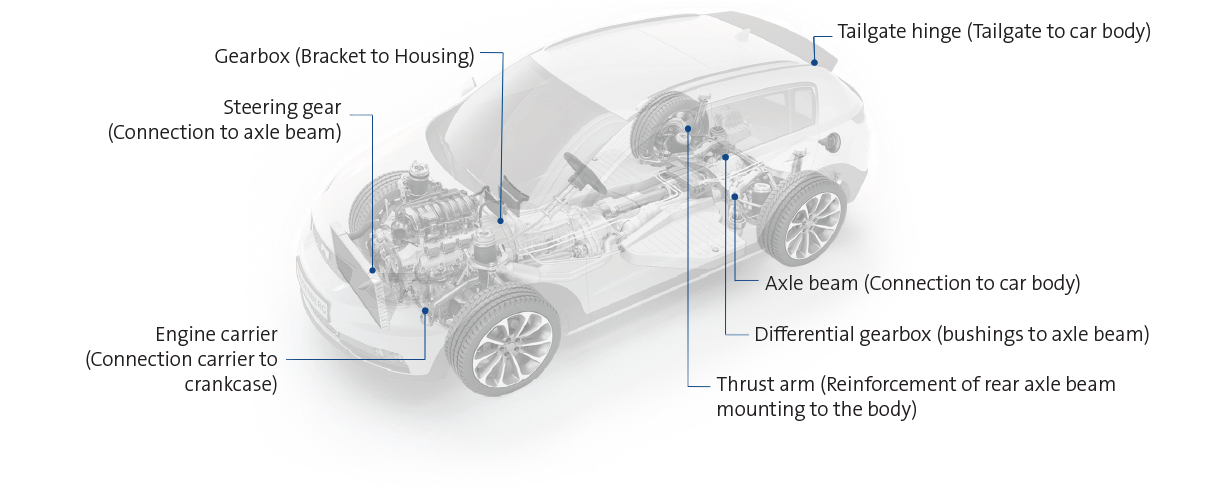
Secure critical joints in cars
By creating a micro interlock between jointed parts, Friction Inserts increase the static friction coefficient in bolted and press-fitted connections. This enables:
- handling of high shear forces
- transmission of higher torques
- improved connection reliability
- a drop-in solution with no need for re-design
- implementation of shared-part strategies
- more compact component design
- compatibility with coated parts
Friction Inserts can also be used to secure connections of mechanical parts in other industries. E.G in cars.